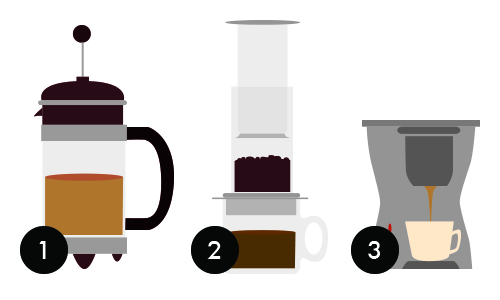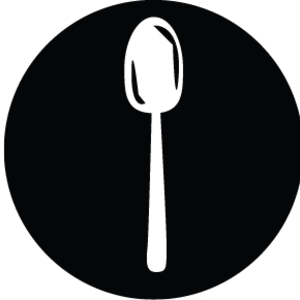Addicted to Caffeine
Ah, caffeine — every college student’s favorite vice during finals week, and for good reasons. There have been several studies that link a moderate intake of caffeine in the forms of coffee, tea and energy drinks to improved memory, reaction time and attention.
When caffeine is ingested, the body reacts in several unique ways. It releases adrenaline that speeds up heart rate, breathing and, consequently, blood flow. This contributes to that wonderful, heightened sense of arousal that gets you through those last fifty pages of your history textbook. Caffeine also inhibits the release of adenosine, a chemical in the brain that makes you sleepy. And that giddy state you reach after a few cups of joe? You can thank the caffeine for triggering the release of dopamine and activating the pleasure centers of your brain.
But does this stimulant actually help you study more effectively? It depends on what you’re studying. In the short term, as you cram for a test the next day, caffeine is perfect for keeping you alert and awake. Some researchers also claim that it improves short-term memory.
Limit that caffeine binge to dire occasions, though. In the long run, it does not improve memory, and it distracts us when our homework and finals involve more complex reasoning. Regular consumption has been linked to anxiety, dehydration, common headaches and an interrupted sleep cycle that can cause fatigue.
As a college student, caffeine can be your best friend when you really need it, but if you find yourself downing several cups of coffee on a daily basis, it may be setting you up for sleep deprivation and attention problems down the road. However, if you have three hours to get through an entire textbook before your orgo final, drink up and study on.
From Plantation to Cup
While sipping your Starbucks drink, take a second and think about where it came from beyond the brand name and polished espresso machine. Depending on the drink you order or blend you choose, the beans that are in your cup of joe may have come from Costa Rica, Guatemala, Ethiopia, Kenya, Sumatra or elsewhere.
As large as the company is, Starbucks only buys 2% of the world’s total coffee beans. While this percentage may not sound impressive, Starbucks is actually one of the world’s most popular purveyors of fair trade and ethically-grown beans.
“Fair trade” means the coffee beans are purchased for a premium price from growers who treat their workers ethically and provide them with favorable work conditions. This means that although the coffee costs a bit more, the workers who produce the beans work under safe conditions, receive decent wages and are of legal age to work.
Starbucks proudly boasts on its website that as of 2011, 86% of its coffee was ethically sourced under Coffee and Farmer Equity (C.A.F.E.) practices. These guidelines take into account quality, social, economic and environmental factors meant to improve life not only for the workers who grew the beans, but also for the entire population of the source country. The company’s goal is to ultimately purchase 100% ethically-sourced coffee.
For customers, fair trade blends often connote higher prices, but for the families working on coffee plantations throughout Latin America, Africa, the Middle East and the Pacific Islands, it means children can attend school instead of picking beans and that biodiversity and water quality will remain high. So whether you frequent Starbucks or prefer another brand of coffee, you can feel good about whatever you’re drinking as long as you know it came from a free and fair environment.
The Brew For You
No need to wake up early for your Norbucks fix. At nearly $4 a latte, you’re not doing your wallet any favors. Ditch those wasteful paper cups and invest in a coffee maker. You’ll save some serious cash and get the robust, flavorful cup of coffee you really deserve.

1. Grosche Madrid Premium French Press
($29.99 at shopgrosche.com)
After careful research, we’ve decided Grosche Madrid Premium French Press Coffee and Tea Maker (350 ml) is one of the best and most affordable French press coffee makers around. At $29.99, this press gives you everything you need: a durable glass beaker, a tight three-part mesh filter, a 3-cup capacity and a sleek design. If you are an avid coffee drinker you know that a good cup of coffee comes from a high quality brewer, and the Grosche Madrid is truly the best French press on the market. It keeps coffee hot for about an hour and still warm for about an hour after that. The press doubles as an excellent tea maker too, extracting the fullest flavor from tea leaves — something you can’t achieve with ordinary tea bags.
2. AeroPress Coffee and Espresso Maker
($25.95 on Amazon)
Rather than brewing a traditional drip cup of coffee, an AeroPress produces a small, single-serving espresso concentrate that you can transform into a Americano or latte. The press forces a small amount of nearly boiling water through finely ground coffee beans to produce a smooth, robust concentrate free of any grounds. No leftover grounds means the cup of coffee doesn’t become bitter as it sits over time. This press is compact enough to fit in your backpack so you don’t have to spend extra bucks at the library café.
3. Drip Black & Decker Brew ‘n Go Personal Coffeemaker
($14.99 on Amazon)
If you enjoy a morning cup of joe but don’t want to share a pot of coffee with your friends, this Black & Decker Brew ‘n Go is for you. The coffee maker brews a single serving that conveniently drips into a 15-ounce thermal travel mug—perfect for mornings on the go. It uses a permanent cone filter, eliminating the waste of paper filters, and doubles as a hot water dispenser for tea, oatmeal or even instant soup.
Drinks Decoded
How many drinks on the menu have you tasted at your favorite coffee stop, let alone tried to pronounce? Depending on how much coffee or espresso the barista mixes with frothed or steamed milk, a number of drinks can result.
Espresso (eh-SPREH-so)
1 shot = 1 to 1.5 ounces
Espresso differs from brewed coffee in that it’s brewed by forcing very hot water through finely ground coffee beans, resulting in a thicker consistency and strong flavor. Much of this flavor is contained in the crema, the creamy dark red foam created by the pressured brewing method.
Cappuccino (ka-puh-CHEE-no)
1 shot espresso + 1 part steamed milk + 1 part milk foam
It’s all about the foam with a cappuccino; this drink is a latte with less milk and more froth. Its name comes from its resemblance to the Capuchin Friars, who shaved the tops of their heads, leaving a ring of brown hair reminiscent of the ring of brown espresso around the froth in a cappuccino.
Americano (ah-mah-ri-CAH-no)
1 shot espresso + hot water
During World War II, American soldiers craved brewed coffee instead of the espresso shots more commonly served in Europe, so they added hot water to imitate the coffee they missed from home. The caffè Americano has a similar strength to brewed coffee but differs in taste.
Latte (LAH-teh)
1 shot espresso + 2 parts steamed milk
Beneath the swirled foam art and below the sweet syrups lies the caffè latte, the base of several indulgent coffeehouse favorites. You can change the type of milk (whole, 2%, skim, soy), the froth-to-milk ratio or the flavor, but it’s still a latte at heart.
Espresso Macchiato
(eh-SPREH-so mah-kee-AH-toh)
1 to 3 shots espresso + dollop foamed milk
“Macchiato” means “stained” in Italian, and an espresso macchiato is a shot (or two or three) of espresso “stained” with a tiny bit of foamed milk. From the outside, it looks like a cappuccino, but it is much stronger. Don’t confuse the espresso macchiato with the latte macchiato, which consists of foamy milk with a half shot of espresso.
Mocha (MOH-kuh)
1 shot espresso + chocolate syrup or cocoa powder + 1 part steamed milk + 1 part milk foam
This latte variant takes its name from the port of Mocha in Yemen, which exported sweet, cocoa-flavored coffee beans to the best coffeehouses in Europe in the 15th century. Some baristas prepare the caffè mocha with white or dark chocolate.
Café au Lait (kah-FEH oh LAY)
1 part brewed coffee + 1 part steamed milk
A smooth and creamy drink, the café au lait is prepared like a latte, but uses brewed coffee instead of espresso. Find it on the Starbucks menu under the name “caffè misto,” which means “mixed coffee” in Italian.
Frappuccino (frah-puh-CHEE-noh)
2 shots espresso + 1 ½ cups crushed ice + ¾ cup milk + 3 tablespoons sugar + whipped cream topping
Consisting of more cream than coffee, the frappuccino is the milkshake of the espresso world.
Starbucks’ Secret Menu
Unsurprisingly, it would be impossible for Starbucks to include each of its boasted 87,000 drink combinations on one menu. But this java mega-
giant is about much more than its frappuccinos and skinny vanilla lattes; some Starbucks aficionados prefer to order from the secret menu. See the list below to find your new favorite drink (just don’t tell anyone).
Dirty Chai
A chai latte with an espresso shot (order the dirty hippie to get a dirty chai with soy milk instead of regular milk)
Zebra mocha or tuxedo
A mixture of white chocolate and regular mocha
Grasshopper frappuccino
Java chips and peppermint syrup blended with a mocha frappuccino
Crunch berry frappuccino
Hazelnut or toffee nut syrup combined with a strawberries and crème frappuccino
Cake batter frappuccino
Vanilla and almond (or hazelnut) syrup added to a vanilla bean crème frappuccino
Widow maker
Half iced black tea, half iced black coffee
Red eye, black eye, green eye
One, two or three extra shots of espresso added to a brewed coffee, respectively


